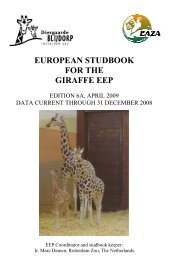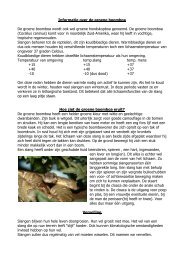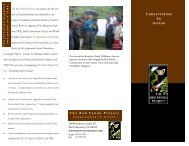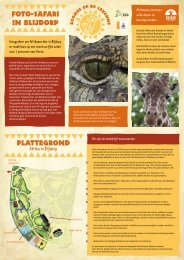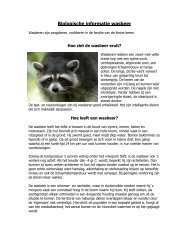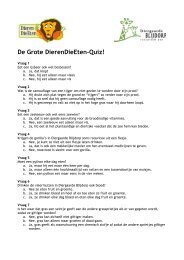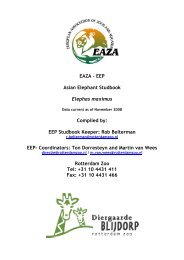Create successful ePaper yourself
Turn your PDF publications into a flip-book with our unique Google optimized e-Paper software.
<strong>EEP</strong> STUDBOOK CROWNED PIGEONS<br />
As soon as the male has found a suitable place, he produces a call-note (the "booming call"),<br />
to attract his female to the place. The female squatting at the selected nest-site initiates serious<br />
nest building. The male reacts to this by seeking for suitable material (not too big branches)<br />
and carrying it back to her (Goodwin, 1983). After the first branches have been placed, both<br />
crowned <strong>pigeon</strong>s start looking for more suitable branches. Sometimes they build a new nest in<br />
just a couple of days, but sometimes they need one or even two weeks to finish the nest<br />
(Wetzel, 1991).<br />
The mating behaviour is described well too (also from ex situ data). Both individuals are on<br />
the ground and the male starts walking around the female with upstreched wings. The female<br />
is responding by also lifting her spread wings and running around the male or running beside<br />
him with slightly bent legs, holding her bill close to his and uttering short, harsh, hissing calls.<br />
Once the female is "frozen", the cock-<strong>pigeon</strong> stands behind her and bows his head behind her.<br />
If the female allows him to do this and doesn't walk away, the male tries to impress her by<br />
making himself bigger by lowering his wings. After some tries he jumps on the female and<br />
then copulates with the female. Both birds bow their tail-feathers, which makes it possible to<br />
copulate. This will last for about five or ten seconds (Lommers, 1982) After this the cock<strong>pigeon</strong><br />
jumps off the female and bows his head more times to ground, while producing a<br />
sound ("boom-pa….boom-pa….boom-pa….), which is called "the bow-coo" (Van Rijn,<br />
1995). Shortly afterwards male and female jump three till five times towards each other,<br />
touching each other with their breasts. Finally both birds start cleaning themselves (Fleay,<br />
1963).<br />
Incubation and fledging<br />
In the wild the birds build a nest approximately 3.5 till 15 meters above the ground (Coates,<br />
1985), probably in the axil of a tree, or at a division of two branches (Rand and Gilliard,<br />
1967). Usually the nest is very simple and consists of a lot of small branches. If the birds<br />
build the nest themselves, it has a size of 450 x 250 mm (Rand and Gilliard, 1967). They look<br />
for an open spot in the forest to build their nest, which enables them to take off from and land<br />
on the nest more easy. During the Archbold Expedition, No 42 (in the late 30s) five nests of<br />
scheepmakers crowned <strong>pigeon</strong>s were found. They were found in typical situations, allowing<br />
for size of bird, in trees at heights varying from 12 to 50 feet (4 till 15 meters). The nests were<br />
(for <strong>pigeon</strong>s) solid and compact but small, made of sticks, stems, palm leaves and tendrils<br />
(Rand, 1942, in Coates, 1983).<br />
<strong>Crowned</strong> <strong>pigeon</strong>s usually only produce, just like other large ground-feeding <strong>pigeon</strong>s<br />
(Goodwin, 1983), one egg per clutch. A function of one-egg clutches might be to enable the<br />
brooding parent to protect the squab better during tropical rainstorms. One egg clutches may<br />
also be an adaptation to a relatively un-nutritionous diet which affects the quantity or quality<br />
of parental crop milk or to intense selection pressure for quick growth and early fledging of<br />
the young (Snow, pers. comm. to Goodwin, 1983). McMorris (1976). On the contrary, reports<br />
that in San Francisco Zoo in 1974 a few times a clutch of two eggs was produced. But it can<br />
not be proved that one female laid these two eggs, because three male common crowned<br />
<strong>pigeon</strong>s and two female victoria crowned <strong>pigeon</strong>s inhabited this aviary. Outstanding enough,<br />
the first chick of both clutches died shortly after birth, while the second was raised by the<br />
"parents" (McMorris, 1976). The two females in the aviary could have laid these two eggs.<br />
115



